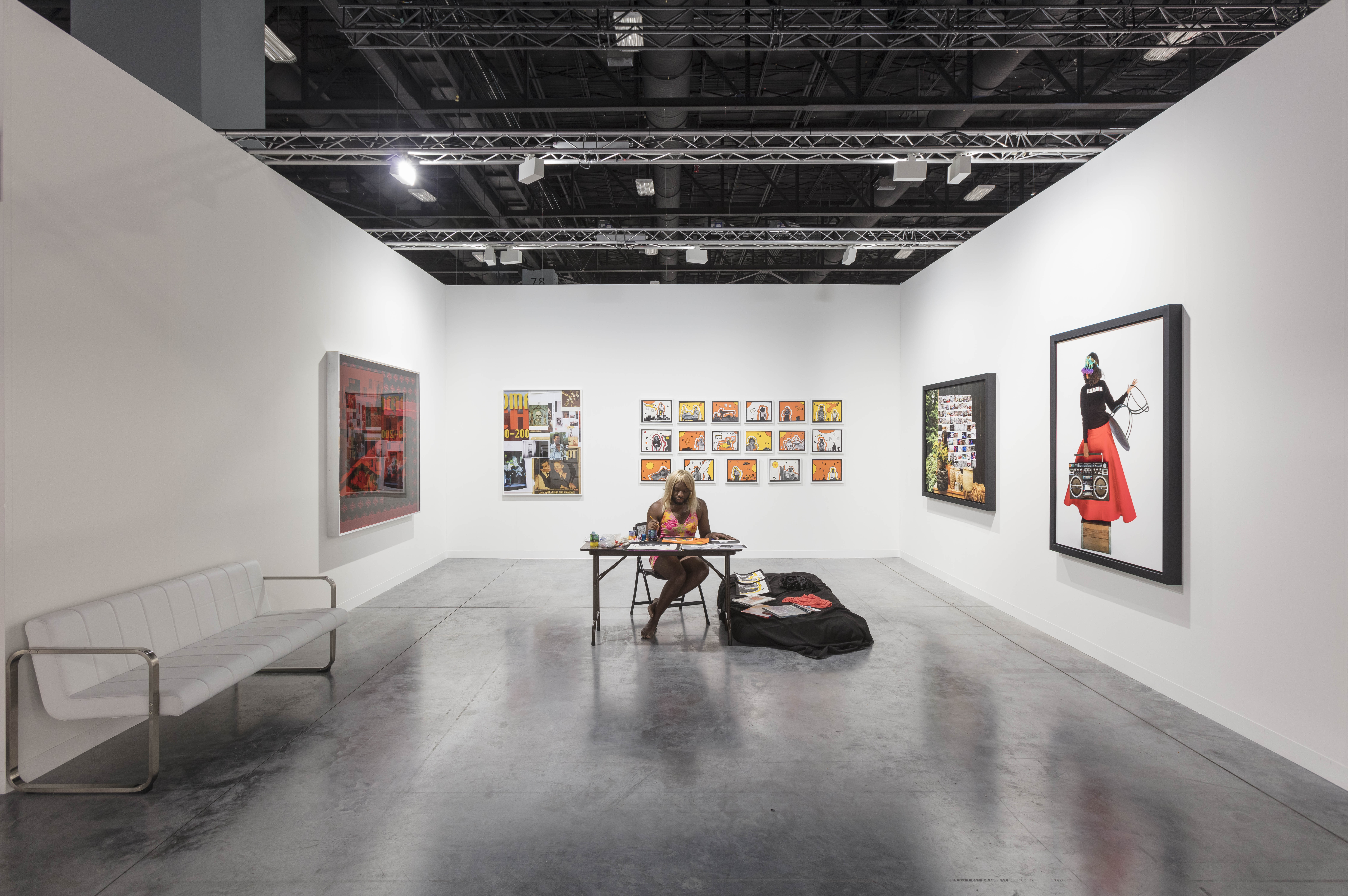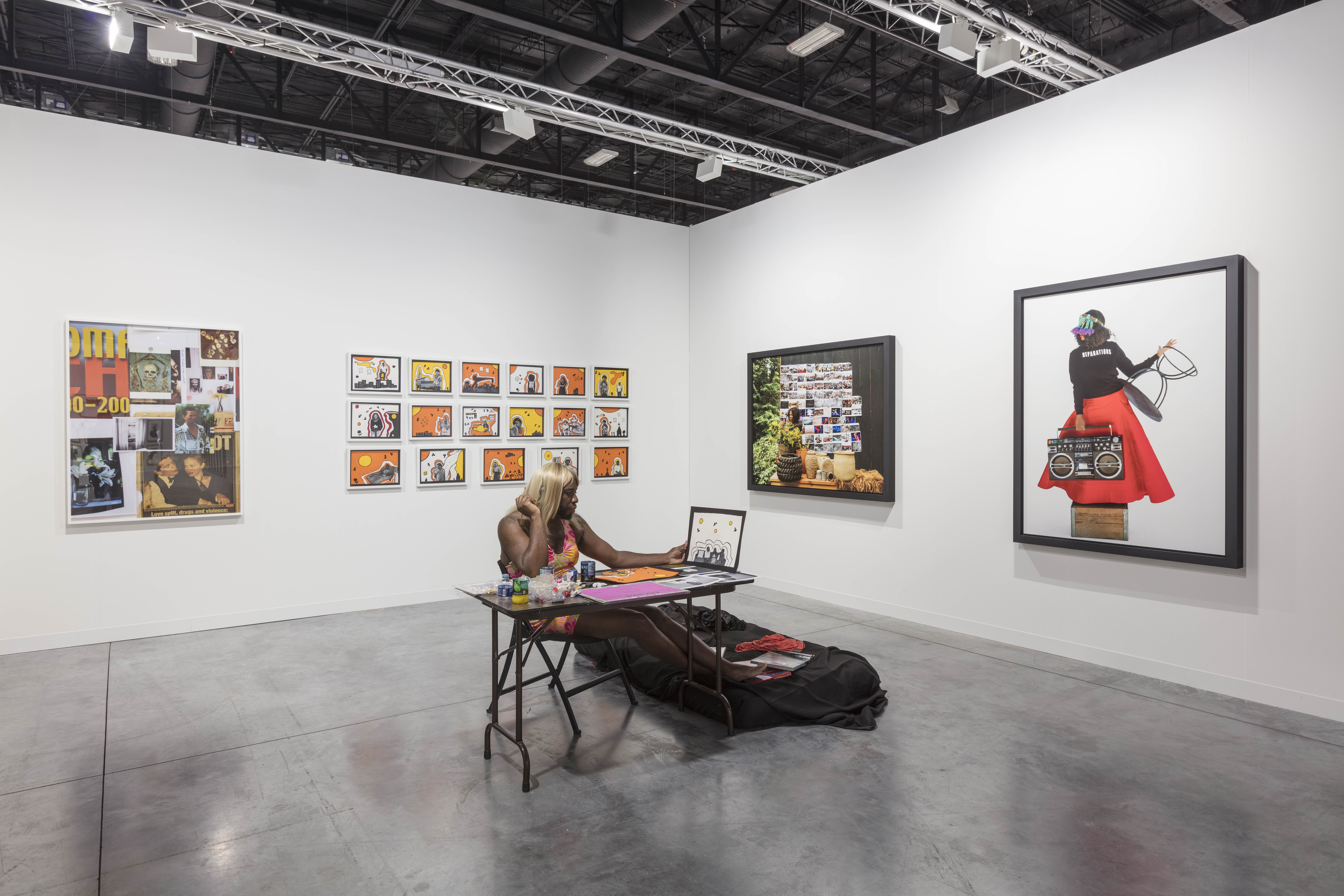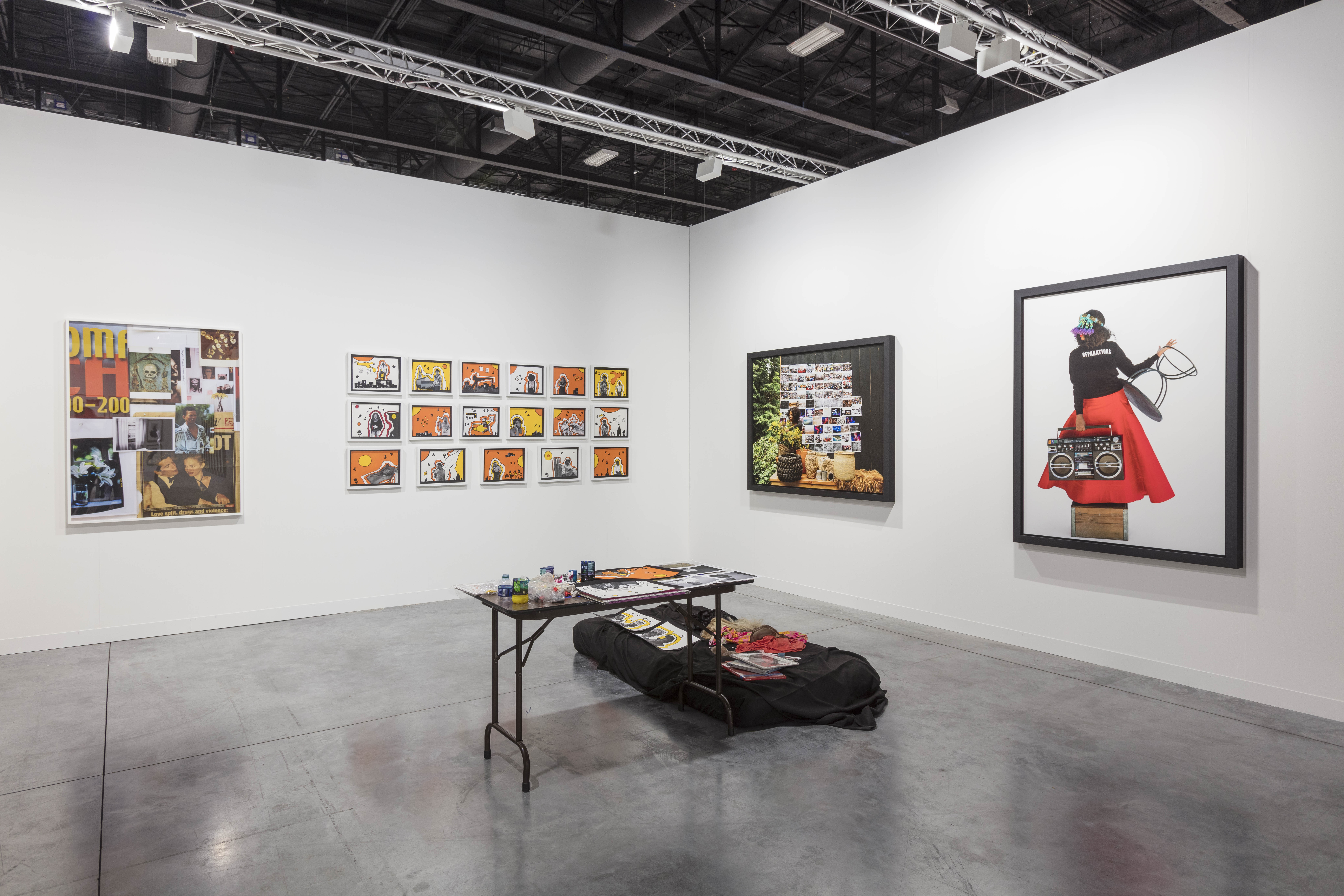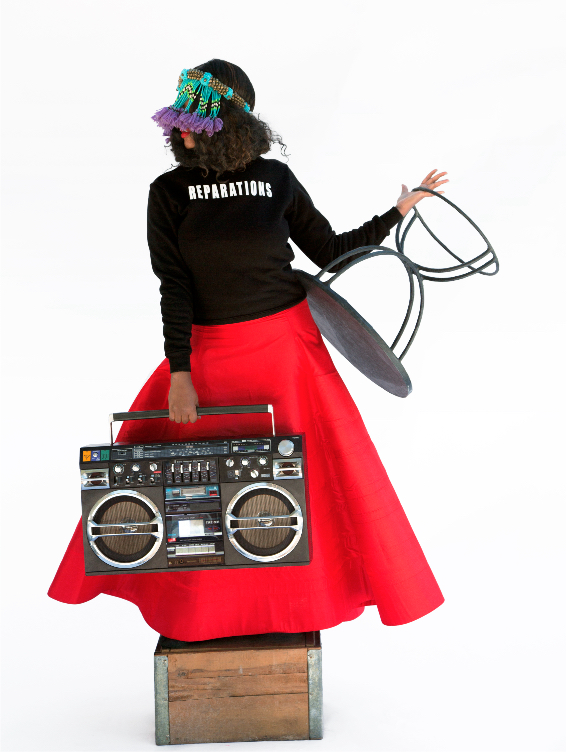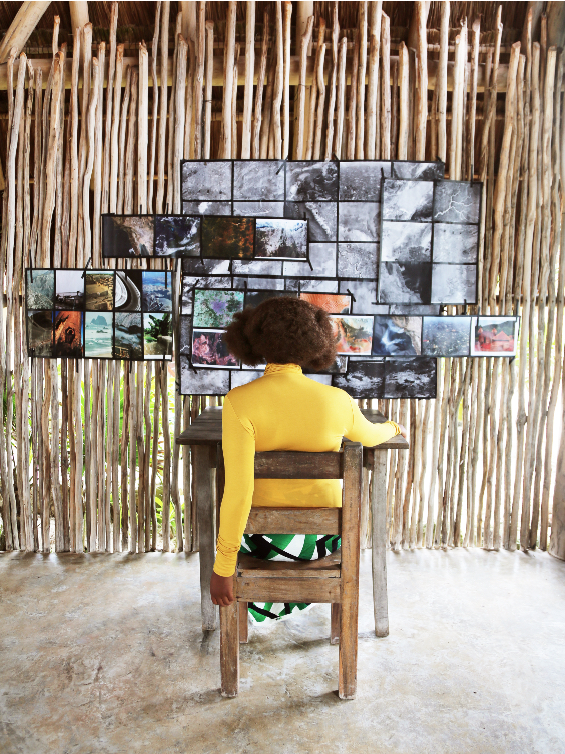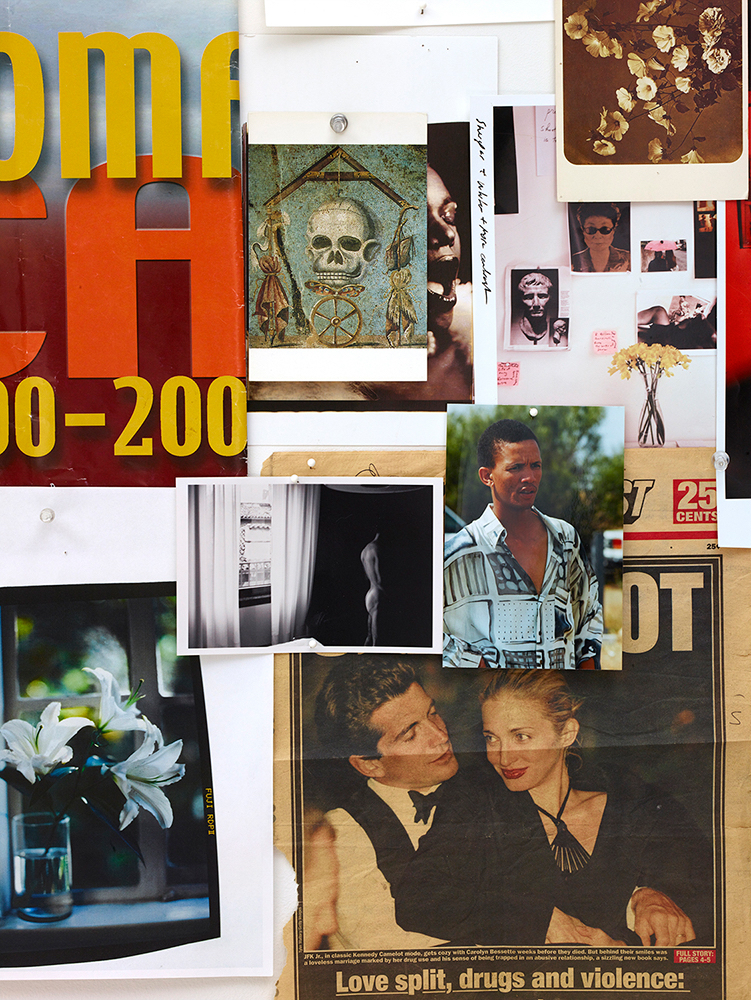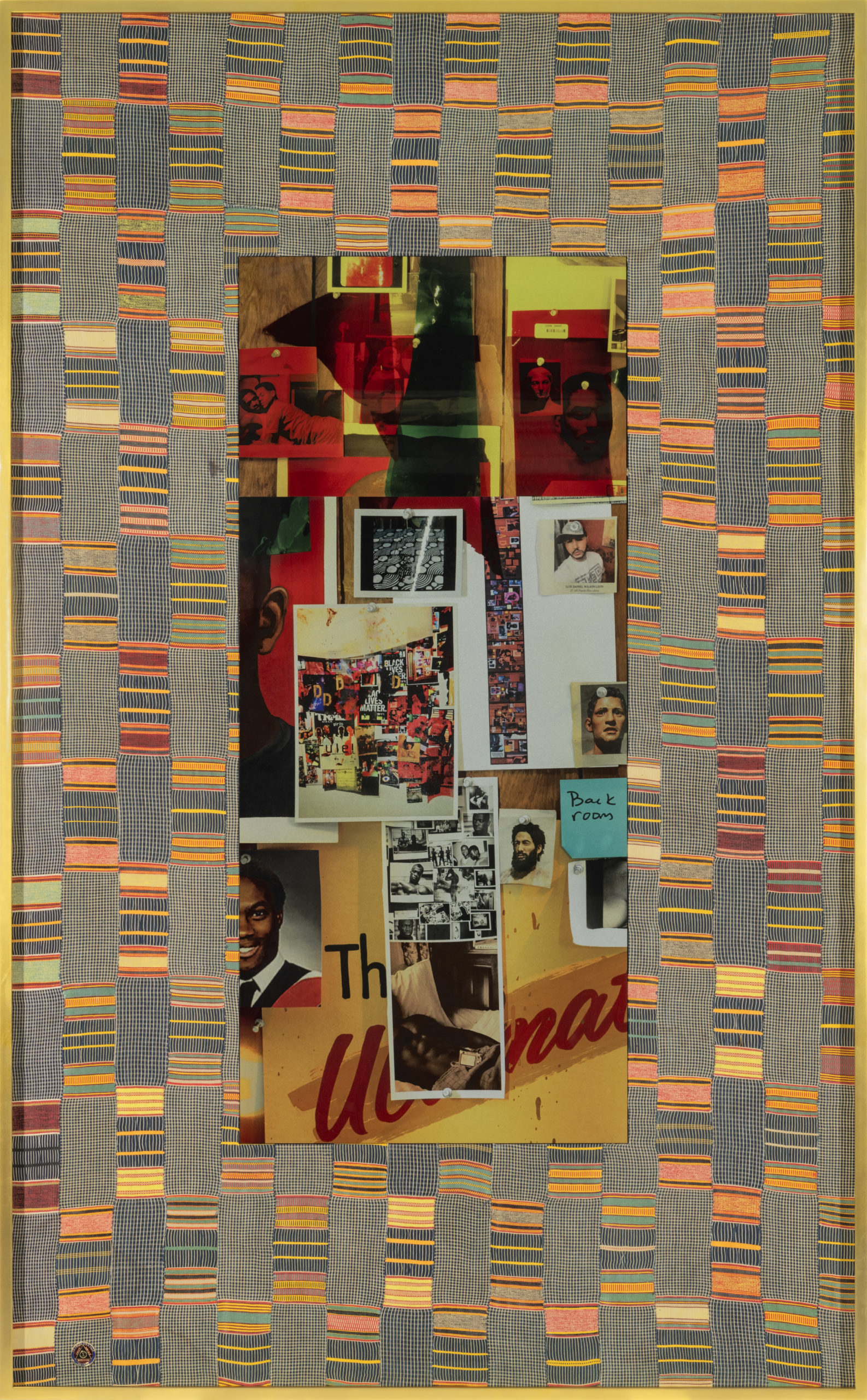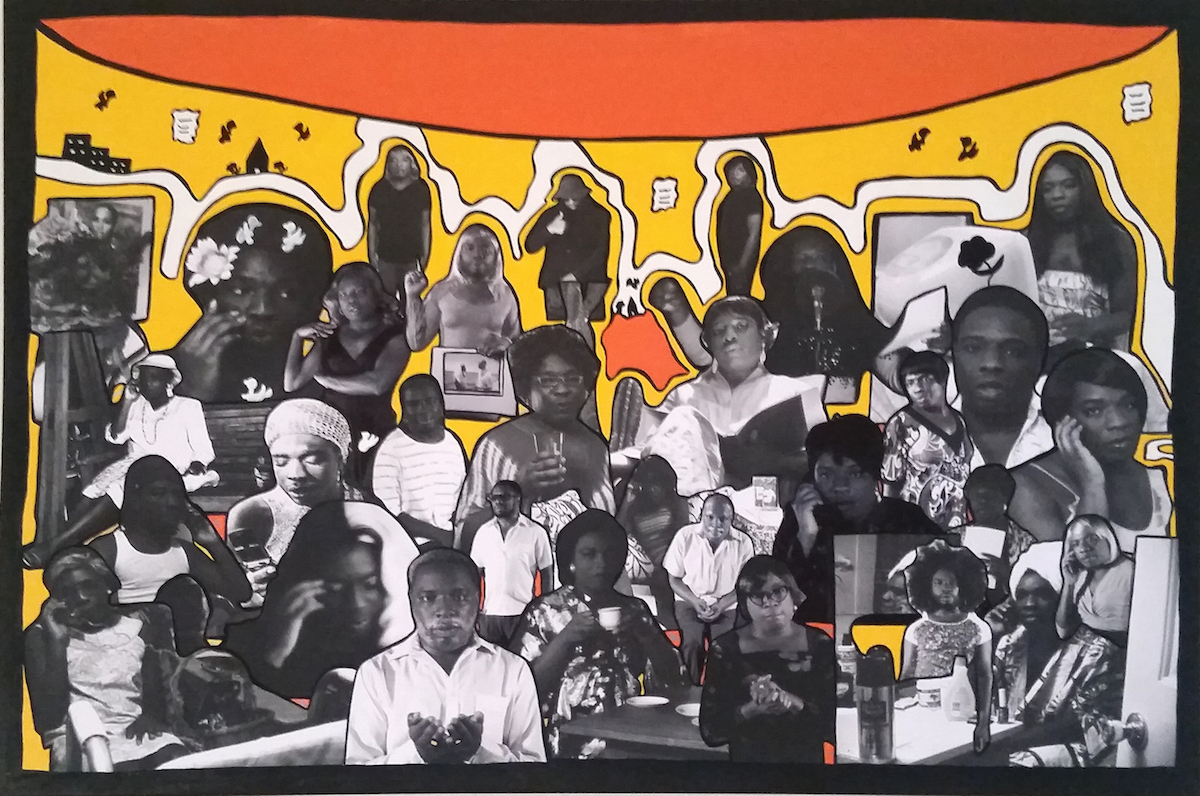Art Basel Miami Beach
December 7 – December 10, 2017
For Art Basel Miami Beach Nova Section, David Castillo Gallery exhibits works in photography, drawing and performance by gallery artists Lyle Ashton Harris, Kalup Linzy and Xaviera Simmons. The works play with performativity and assumed identities, approaching the history and legacy of drag as a backdrop for expanded, visual investigations into three distinct treatments of identity and the artist’s role as subject.
Lyle Ashton Harris’ Blow Up series (2004 to present) draws from his personal archive of thousands of 35mm Ektachrome photographs taken between 1986 and 1996, which document intimate moments with his friends, lovers, and members of the wider LGBTQ community during the second wave of AIDS activism. In these works, Harris collages his own images amid ephemera from clubs, protests and the ballroom scene; newspaper and magazine clippings; postcards and other memorabilia, and layers them in a functional nostalgia that surveys his own past a marker of our collective memory. The collages become abstract personifications of Harris himself—who appears, in drag, throughout the assorted imagery—and challenge their viewer to mine the rich subject matter, read the clippings, and travel through this visual archive as a recent history of queerness. The works will all be new, from within the last year.
Kalup Linzy assumes the role of Katonya—a recurring artist-character from his pantheon of nearly thirty personalities—in an ongoing, live performance during the week of Art Basel Miami Beach. Set up in the fair booth with a drafting station, Kalup-cum-Katonya will be present each day for one hour, drawing and sketching pieces that will be later shown and available for sale in the booth. Noting Lyle Ashton Harris as one of his earliest influences, drag as medium is central to the way Linzy constructs narratives: He dramatizes the goings-on of the New York art world and his rural Florida upbringing through the lens of soap operas, reality television and Hollywood drama, taking on most of the roles himself. Outfitted in dress and blonde wig, Linzy’s performance as Katonya enacts the economies of the art world at-large, exemplifying his greater practice and the multi-hyphenate means through which uncommon representations find their way into conventional acceptance.
Xaviera Simmons embodies fugitive stories of nomadism, movement and displacement across her work in photography and performance. She is often the subject of her pieces, inserting herself into Americana and histories of the Deep South, the Wild West, refugee boatlifts, and others. In her Characters in Landscape series, a body of work Simmons has undertaken for nearly fifteen years, she performs characters rooted in the historical narratives of their sites. In these images, Simmons evidences each site with her presence and often reveals her role as photographer, pictured with cameras or amid arrangement of images that cast her on both sides of the picture plane. In her inexhaustible transformations, costume-changes, and posturings, Simmons possesses and turns the male gaze inwardly towards herself, and propositions new readings of the codes of conduct that govern cultures, both dominant and peripheral alike. The photographs will all be new, from within the last year.
Together, these bodies of work instigate urgent questions about common (and uncommon) representations of race, sexuality, and gender, and the power these identifiers have in defining society at-large. In their transformations, the artists each queer themselves and their practices along fluctuating threads of meaning between here and there, us and them, then and now. Harris, Linzy and Simmons each direct their gazes back to the viewer as their work—and they, by proxy—are, in return, gazed upon.

